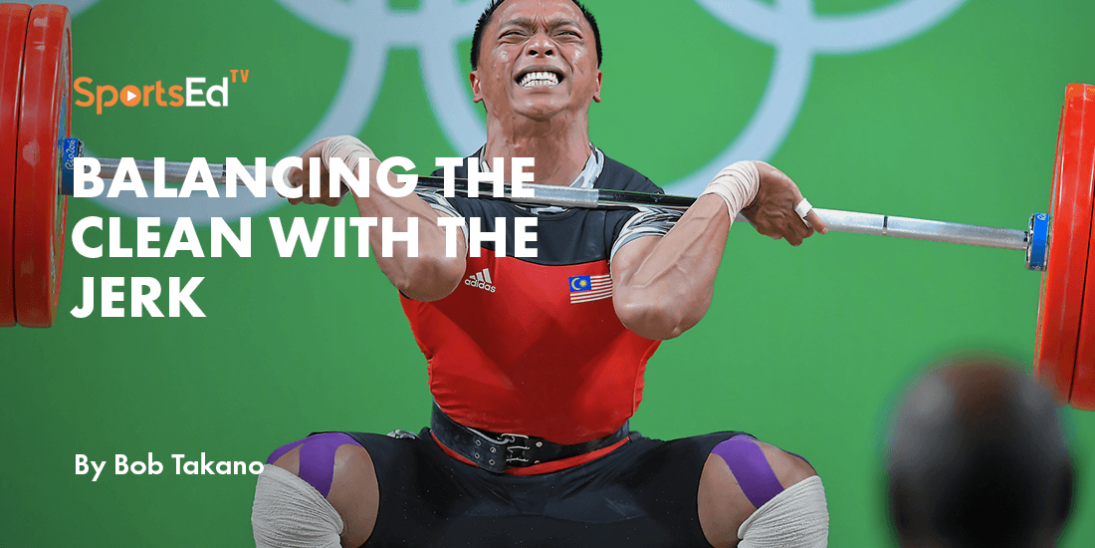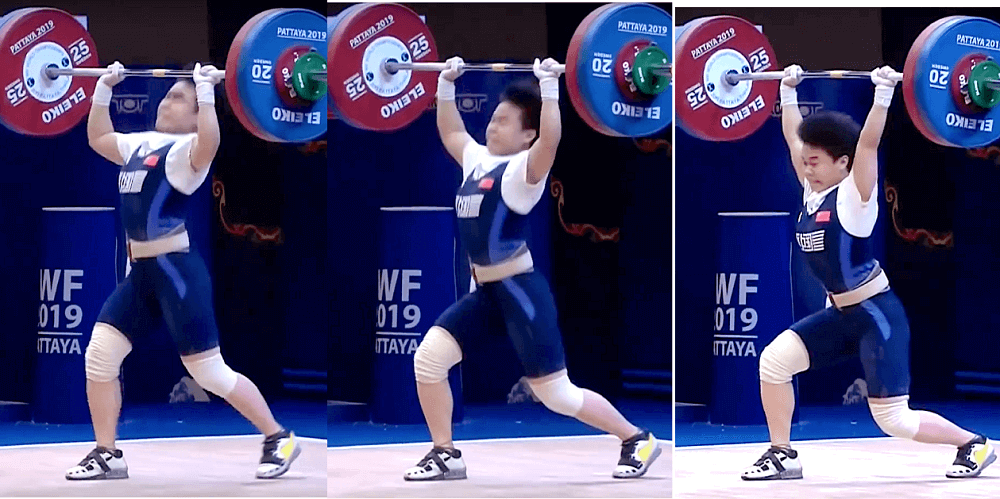Weightlifting
Welcome and thanks for visiting...

Balancing the Clean with the Jerk

It’s not uncommon to find a significant number of novice lifters struggling with the jerk, which was not the case in decades past. To get a clearer picture, it might be helpful to consider possible causes of the disparity between the two eras.
PERUSING THE BACKGROUNDS OF LIFTERS
In the early days of populist resistance training, when the majority of trainees got started by buying a barbell for home use, the first exercise learned was inevitably the two-hands or military press. While this led to the early development of deltoids and triceps, which are both helpful for jerking, I believe an equal benefit was the ability to tighten the torso musculature while supporting presses in the overhead position. This combination of deltoid, triceps, and torso musculature development made it easier to master the jerk before learning the nuances of the clean.
In today’s approach to learning weightlifting events, athletes are entering from a wide variety of backgrounds. Furthermore, new lifters and aspiring coaches have become focused on pulling techniques. You rarely see much material from current aficionados discussing the technique of the jerk. So, there is somewhat of a knowledge gap between pulling techniques and jerking techniques.
THE VOLUME ISSUE
Let’s widen our understanding by considering the volume of the clean & jerk. I sometimes get asked whether I consider a clean & jerk to be a single repetition or two repetitions. For purposes of training design, I have to consider it as two separate and different reps. Therefore, the notation should be 1+1. This type of conceptualization allows us to consider where the emphasis should be in program design.
Ideally, if the training is well designed, a competitive lifter should be able to jerk pretty close to the weight that he or she can clean. If one watches top-level competition, almost all the weights that are cleaned are also jerked successfully. This tells me that the appropriate amount of volume is being devoted to the clean and to the jerk. This does not mean that the volumes are equal, but rather that they are appropriate for the athlete in question.
PLEASE CRITIQUE MY LIFT!
It’s not uncommon these days for athletes to post videos of their lifts and ask for critiques. This is great, especially if it leads to a strategy for improvement.
I periodically see videos in which the lifter cleans the weight with some difficulty, only to power jerk or even push press for a couple of reps with little resistance. These athletes need to spend more time getting stronger and doing more reps in the clean. Often, the critiques will focus on technical errors and not on the balancing of volume for each lift. In other words, more work on cleans and clean assistance exercises.
On other occasions, I see videos of lifters performing cleans with some difficulty, only to struggle with the power jerk. The critiques might focus on the power jerking technique when the obvious solution would be to learn how to split jerk, as one can drop lower in the split than power jerk. Some might prescribe a squat jerk, but the squat jerk is a very precarious affair, and most individuals will have a much lower success rate.
IS LACK OF LEG STRENGTH THE CULPRIT?
Some athletes struggle with the jerk because the legs are too exhausted after a heavy clean. Should more volume be dedicated to squatting than jerking? This sort of analysis is best done by an experienced coach. I’ve always tried to get my athletes to squat at least 131% of the clean or to front squat at least 105% of the clean.

In summation, asking for critique of videos is a good thing, and offering technical tips is also a good thing, but solving the problem of a relatively low jerk may hinge more on program design and volume allocation.
The general suggestion that applies to all endeavors is that successful performers in a complex endeavor are the ones who spend time, thought, and effort on weak points. Until an athlete is truly balanced, the journey is a quest to bring all the weak points into balance with the strengths.








